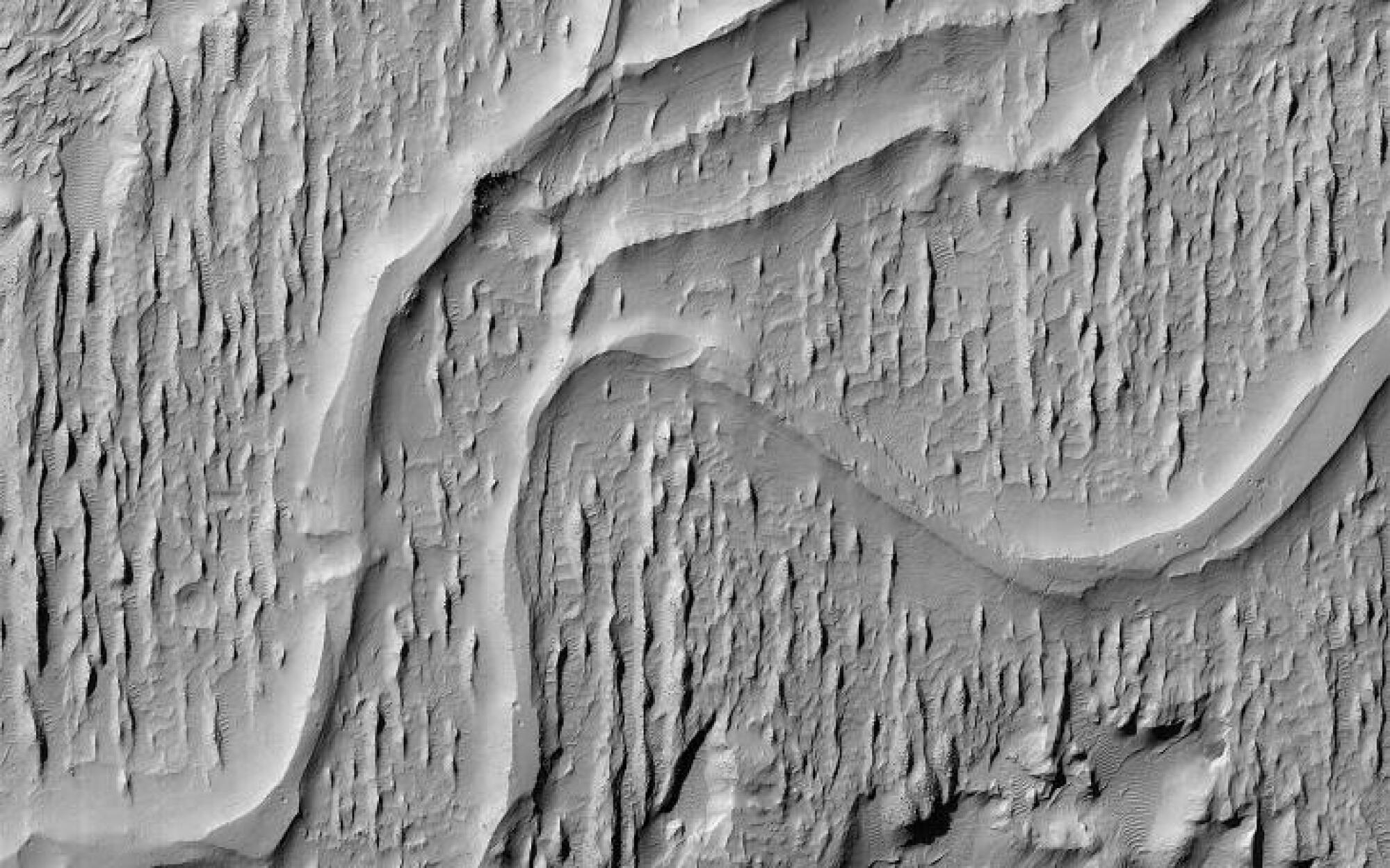NASA’s Mars Reconnaissance Orbiter has detected signs of ancient, dried-up rivers on the Martian surface. The image, recently shared on NASA’s “Planetary Photojournal,” showcases ridges in Aeolis Planum, offering a glimpse into a bygone era when water flowed on a more temperate Mars.
The meandering formations in the image were shaped by water filling the rivers with gravel, with finer grains surrounding the waterway during bank overflow. This geological process, known as inverted channels, results in high-standing ridges once the river disappears.

The snapshot, taken from approximately 166 miles above the high Martian plains, reveals the paths of ancient rivers that once wound their way across Mars. The Mars Reconnaissance Orbiter, equipped with the High Resolution Imaging Experiment (HiRISE) camera, captured detailed photos of the Martian surface.
In contrast to Earth, Mars has experienced a significant loss of atmosphere, transforming it into an arid, desert-like world. Today, Mars is 1,000 times drier than the driest desert on Earth, creating a challenging environment for sustaining life. Nevertheless, NASA’s Perseverance rover is actively exploring the Martian surface, searching for potential traces of past primitive life.
Looking ahead, NASA is exploring the possibility of deploying a compact Mars plane to join the agency’s satellite and rovers in further exploration. This innovative craft could one day travel at speeds of around 135 mph over the Martian desert. As NASA continues its exploration efforts, the prospect of pioneering astronauts setting foot on Mars’ red soil remains a distant yet tantalizing possibility.
Mark, an award-winning journalist and the science editor at Mashable brings a wealth of experience to his reporting. His background includes communicating science as a ranger with the National Park Service, and he is passionate about educating the public on a diverse range of topics, from earth sciences and space to biodiversity and health.


